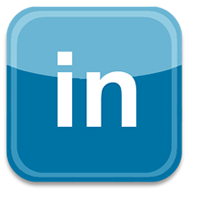The Green Sheet Online Edition
August 8, 2009 • 09:08:02
Accounts receivable processing and the ISO revenue model
Three seemingly unrelated recent events should cause ISOs to think about the future of what we used to call the credit card industry. The first is that Visa Inc. published its quarterly earnings at the end of July 2009. Given the issues with the economy, you might have been a little bearish about Visa's earnings, but you would have been wrong.
First, Visa's earnings
Visa posted a top-line sales increase of over 2 percent year to year, and earnings were up 13 percent from July 2008. Visa's goal for next year is a 20 percent growth in earnings.
Visa now derives 60 percent of its U.S. revenues from debit cards and 40 percent of overall revenues from foreign transactions. If you haven't been paying attention, you might not have realized that Visa's transaction volume is now about twice that of MasterCard Worldwide, which even surprised me.
Also noteworthy is that unlike American Express Co., which issues its own cards, Visa is relatively isolated from credit exposure in the current consumer financial debacle, since its cards are issued by banks, not Visa directly.
If you are an ISO, keep a close watch on how Visa is generating its income, because up to now, being a successful ISO has been about handling merchant credit card processing, which increasingly means taking Visa transactions.
Second, Visa and U.S. Bank
Additionally, Visa and U.S. Bank N.A. created the joint venture, Syncada. (Who thinks up these names, anyway?) Syncada is "a B2B [business to business] global invoice exchange platform with integrated receipts and payable financing." This network processes and tracks invoices, makes and receives payments around the world, and offers payables and receivables financing through local and global financial institutions.
In this case, Visa decided to use a product developed by U.S. Bank, the sixth-largest commercial bank in the United States. Called PowerTrack, the product provides automated B2B electronic invoicing, payment processing and trade finance for "hundreds of customers."
That doesn't sound robust, until you realize that last year it processed $18 billion worth of invoices.
The real motivation for banks here is not to get the electronic invoicing business - that is just a modern, electronic version of the lockbox business. The real money is in the trade finance function: either loaning money to pay invoices, buying receivables at a discount or loaning money against them to increase cash flow for clients.
Visa's press release stated this is "a more efficient way to pay and be paid by replacing inefficient, paper-based B2B processes with an integrated, fully electronic financial supply chain platform." You could have lifted this very language from a press release First Chicago Bank & Trust did 20 years ago when it launched the GM Project, and not much has changed since then on this front, but perhaps enough has changed to make it different this time.
Third, BofA and Bottomline
The third event is that Bank of America Corp. entered into a "strategic relationship" with Bottomline Technologies to "advance the growth of Bank of America's market-leading electronic network for payment and invoice automation."
Bottomline will acquire BofA's PayMode product, operations and vendor network for B2B electronic invoicing, payment processing and remittance data delivery. BofA said it has about 550 clients that have processed about $300 billion since the inception of this product - that's a big number, although the time frame wasn't specified.
A BofA spokesman said, "After a thorough evaluation, we have concluded that working with Bottomline will accelerate the growth of PayMode."
What it means
Here's the way I see it:
-
1. Visa is not just a credit card processing company anymore. It sees its growth as managing the whole receivables and payment process, and rather than try to invent a product to do this, it bought an interest in a product developed by one of its major issuing banks, so it can get speed to market and a product that works.
The company will offer Syncada to all financial institutions (FIs) that are Visa members, and those FI's can private-brand it, enabling them to compete on a level playing field with even the largest banks for trade finance and international business. This is where Visa is going to put its energy in the next year, and, as an ISO, you should think about how you can participate in this.
2. BofA built a product similar to the one developed by U.S. Bank. For reasons that are anyone's guess, going forward BofA is turning over the marketing and product management to a company that is a "pure play" in the billing and invoicing space.
Two major banks built similar products, and each seems to enjoy a measure of success with its own product.
But U.S. Bank hit the jackpot, because Visa is going to market Syncada internationally to all its banks as the solution to the age-old question of how to automate receivables processing.
While BofA would doubtless disagree, it seems to me that BofA is turning over PayMode to Bottomline in the hope that the third party will be more successful at selling it than BofA was, and if so, this will mean new demand deposit accounts for the bank.
This might be a big success for BofA in the long run, but in the short run, it is much less than a home run, at least compared to the U.S Bank situation.
The ISO opportunity
Now, how do ISOs make use of all of this? A few weeks ago I attended the Midwest Acquirers Association's annual conference (which incidentally was very well organized - kudos to the people who put it together).
Remote deposit capture (RDC) was a big theme, and this year the buzz seemed to be around integration with general ledger systems - not just QuickBooks, but others, too.
Keep in mind that while people are saying checks are going away (from perhaps 30 billion to around 25 billion annually, over the next few years), all B2B payments are check-based and are likely to remain so for the foreseeable future.
For ISOs, it's a good news scenario. First, a recent study published in July 2009 by Aite Group LLC shows that about half of small merchants in the United States have never even heard of RDC.
Secondly, manufacturers have been building better and better imagers, so now an imager (with the right software) can read a check and the coupon/stub/invoice that accompanies it, and automatically post the cash books, bank ledger, accounts receivable and customer account. This is a big deal for small merchants or for any merchant.
And you, as ISOs, will have to explain, sell and install this equipment for merchants, not the banks, which have been asleep at the switch for four years now with RDC. There's no reason you cannot call on larger firms, too, and sell the merits of an automated accounts receivable processing product because, if there's one lesson we have learned, it's that ISOs can sell and banks cannot.

Brandes Elitch, Director of Partner Acquisition for CrossCheck Inc., has been a cash management practitioner for several Fortune 500 companies, sold cash management services for major banks and served as a consultant to bankcard acquirers. A Certified Cash Manager and Accredited ACH Professional, Brandes has a Master's in Business Administration from New York University and a Juris Doctor from Santa Clara University. He can be reached at brandese@cross-check.com.
Whether you want to upgrade your POS offerings, find a payment gateway partner, bone up on fintech regs or PCI requirements, find an upcoming trade show, read about faster payments, or discover the latest innovations in merchant acquiring, The Green Sheet is the resource for you. Since 1983, we've helped empower and connect payments professionals, starting with the merchant level salespeople who bring tailored payment acceptance and digital commerce tools, along with a host of other business services to merchants across the globe. The Green Sheet Inc. is also a proud affiliate of Bankcard Life, a premier community that provides industry-leading training and resources for payment professionals.
Notice to readers: These are archived articles. Contact information, links and other details may be out of date. We regret any inconvenience.





